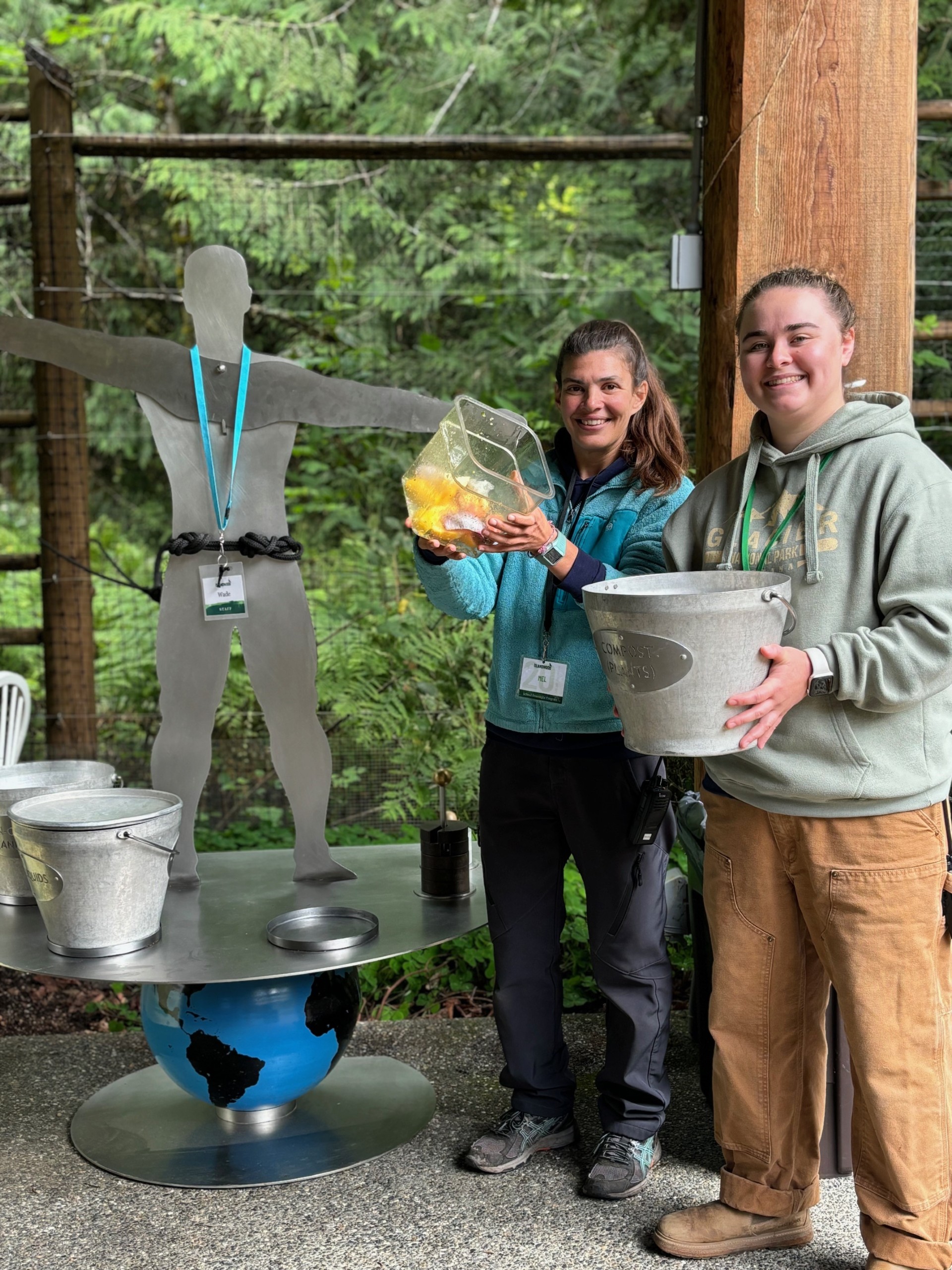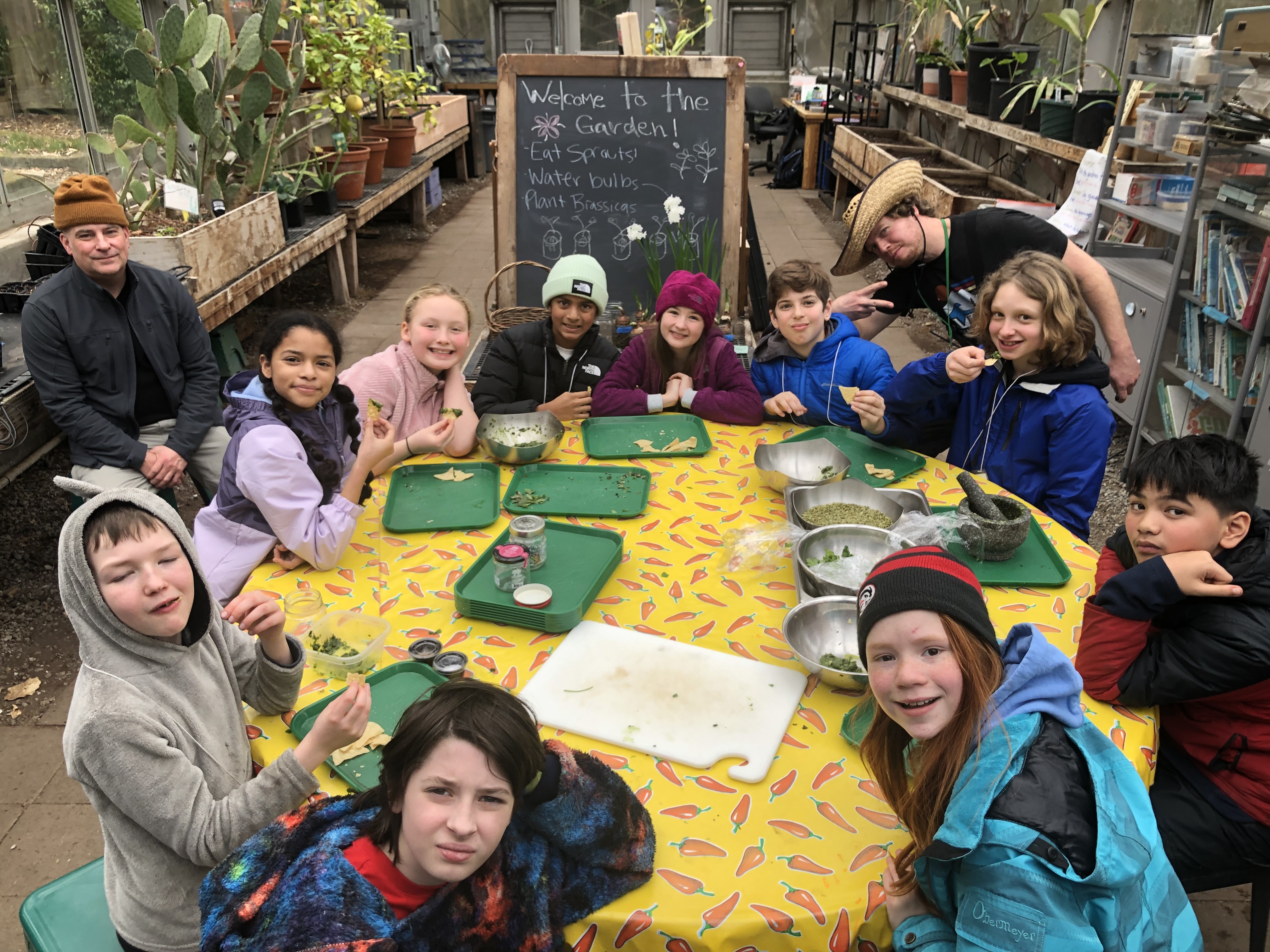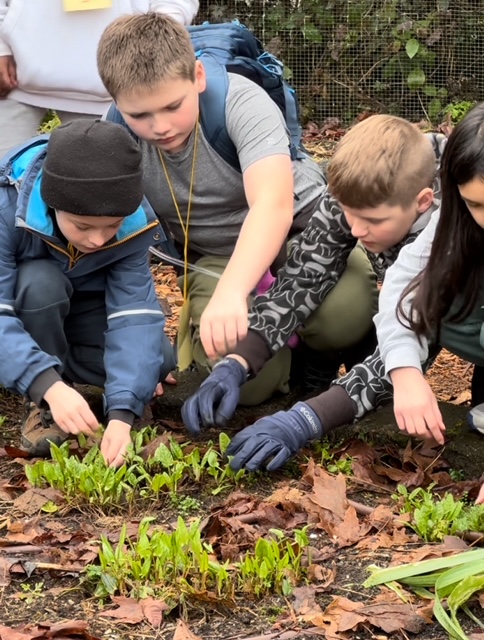We’ve started to plant seeds with School Overnight Program students in the greenhouse!
At IslandWood, Wade was created to serve as the food waste station where School Overnight Program students would sort and weigh all the food waste after each meal in the dining hall. This process was designed to teach students about the amount of food left after each meal and its relationship to decomposition, highlighting how some waste could be sorted into compost. The students learned how they fit into the process, with the waste being broken down by worms in a process known as vermiculture.
Wade’s recent transition to our garden was a result of the collaborative efforts of our dedicated garden team, including IslandWood’s Garden Staff Instructor, Mel, Director of School and Community Education, Ray, and EEC class of 2024 grad, Nat. Nat played a pivotal role in this transition, drawing inspiration from her coursework to reimagine Wade’s purpose. Her vision was to emphasize student choice and empowerment in the dining hall and to educate them about their role in food systems, particularly how nutrients from meals are cycled through compost and back into the garden. Wade’s new role in the garden involves helping students weigh items harvested from the garden, weighing compost after Soil to Snack lessons, and deepening their understanding of their role in the garden’s ecosystem.

Ray Cramer, IslandWood’s Director of School and Community Education, moves Wade from the Dining Hall into the Garden Classroom under the guidance of Zack Pattek, Campus School Programs Manager.

Mel & Nat demonstrate with food scraps and buckets in front of Wade in its new garden home.
In the garden, Wade will be actively used in our Soil to Snack lessons, which we lead in collaboration with the kitchen team. During these lessons, students will collect ingredients for their Soil to Snack recipes and use Wade to weigh them before adding them to their dishes. Wade will also be used to weigh compostable materials and harvests from taste tours, allowing students to see the tangible results of their work and understand the cyclical nature of nutrients in the garden.
We hope that through Wade’s presence in the garden, students will learn how nutrients are cycled throughout the garden. By harvesting and weighing ingredients, comparing them to the weight of compost, and understanding the breakdown of nutrients, students will engage in real-time agricultural practices. This hands-on experience will enable them to use data from Wade to compare future harvest yields and determine the amount of soil needed for the spring growing season.
By empowering students to make informed choices and understand their impact on food systems, we hope to inspire a deeper appreciation for sustainability and the environment.










